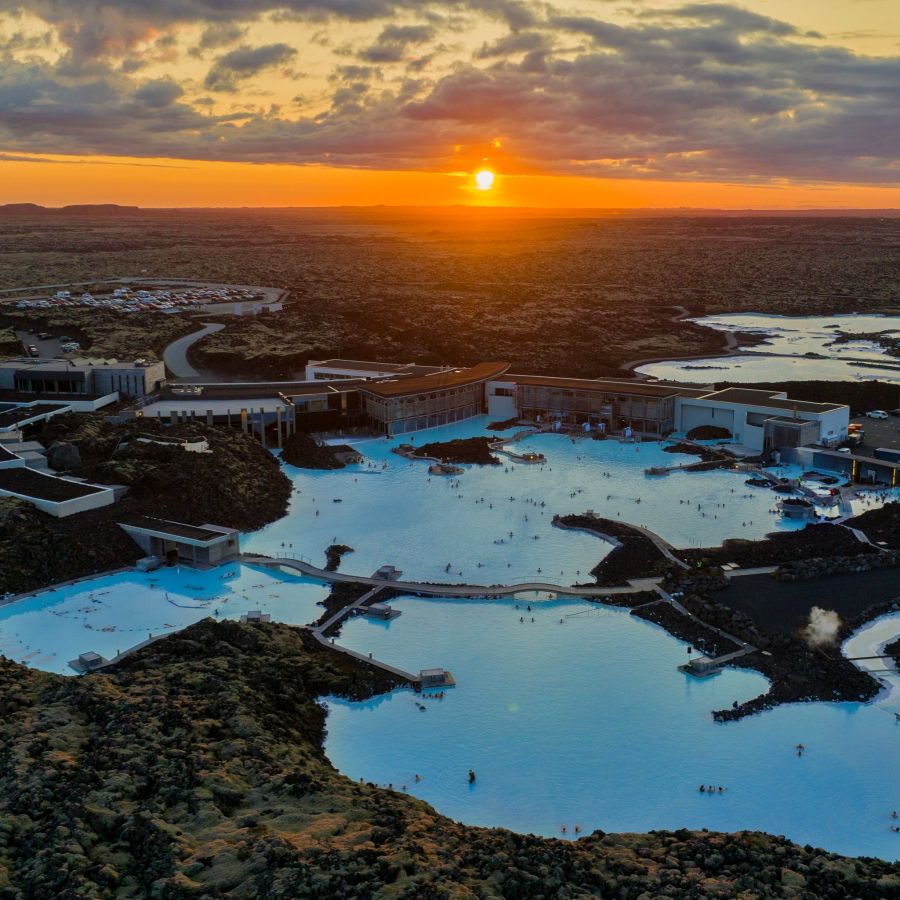
Volcano in southwestern Iceland erupting
For the fifth time in the last three months, a volcano in Iceland is currently erupting. Starting in the early afternoon of May 29, lava has been spewing from the Sundhnúkur crater row and is still ongoing. Meanwhile, visitors at the Blue Lagoon thermal spa, one of the country’s top tourist attractions, have been evacuated for safety and the spa remains closed.
Live report from road on fire south west of Grindavík #Iceland #volcano pic.twitter.com/Q80bQaqVm1
— Duncan (@shaksper) May 29, 2024
Moreover, the eruption site lies a few miles northeast of the coastal town of Grindavik and around 50 km (34 mi) from Reykjavik, Iceland’s capital. Residents in Grindavik have been evacuated for safety and roads around the town are closed to traffic.
Keflavik International Airport, the main airport in Iceland remains open, despite being only 20 km (12.5 mi) from the eruption. Anyone planning on traveling to or from the affected area should take note of the following. According to Iceland’s Meteorological Office:
Intense seismic activity is ongoing on the Sundhnúkur crater row. A magma propagation might be starting or has started, and a volcanic eruption could follow.
About volcanic activity in the area
Reportedly, the lava is shooting around 50 m (164 ft) into the air from a 1 km (0.6 mi) wide fissure. Meanwhile, residents of Grindavik were previously evacuated in November 2023 after a series of earthquakes opened cracks into the earth between that town and the small mountain of Sýlingarfell to the north.
Another volcanic eruption has begun in south-west Iceland, forcing the evacuation of the famous geothermal Blue Lagoon spa and the small fishing town of Grindavik.https://t.co/QOPbRC10tr
— Nationwide90FM (@NationwideRadio) May 29, 2024
Prior to the recent eruptions, the Svartsengi volcanic system had been dormant for some 780 years. Moreover, that volcano is only a few miles west of Fagradalsfjall, a volcano that was dormant for 6,000 years before it erupted in March 2021.
During an eruption in November, authorities declared a state of emergency after hundreds of small earthquakes hit the Reykjanes Peninsula, which is Iceland’s most populated region.
Authorities in Iceland warn travelers
Vidir Reynisson, Head of the Civil Protection and Emergency Management in Iceland, told the national broadcaster RUV:
This is not a tourist attraction and you must watch it from a great distance.
However, while flights are currently still arriving and departing, the airport advises passengers to monitor flight information here.
Volcanic eruptions can become a major hazard to air travel as ash in the atmosphere can cause jet engines to fail. Moreover, it can reduce visibility and damage flight control systems. However, the officials at the airport are used to volcanic activity in Iceland and are fully prepared to deal with it without necessarily closing the airport.

Readers can watch the volcano live on the BBC website here.
The previous volcano eruption in Iceland happened between Hagafell and Stóri-Skógfell on Saturday, March 16, 2024.




[…] in the Silfra Fissure, Iceland [Image by Shriram Rajagopalan on Flickr]Silfra Fissure in Iceland was ranked as the safest diving site in the world with a safety score of 55.8. It was also ranked […]
[…] of making money from tourism, but this might be one of the more unusual trends. Meanwhile, from Iceland to the mountains of Switzerland, canned air is an option to take home as a souvenir for family and […]